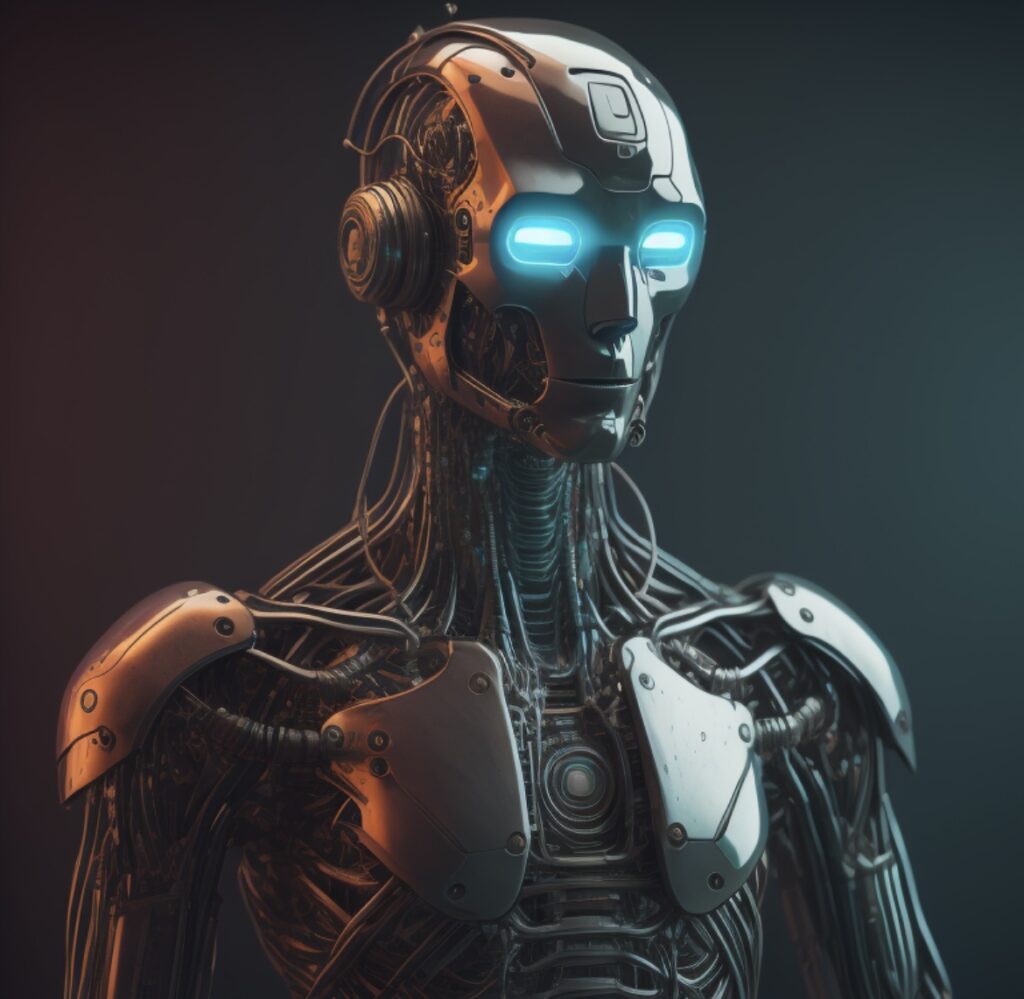Back to: STEAM Pilots AI Essentials
Some Definitions
Artificial intelligence (AI) is a branch of computer science that uses algorithms, data, and computational power to create machines that can perform tasks that usually require human intelligence. AI systems can make predictions, recommendations, or decisions that affect real or virtual environments based on human-defined objectives. AI practitioners aim to create systems that can perform complex tasks such as reasoning, learning, problem-solving, perception and language understanding.

According to the prominent computer scientist, John McCarthy (1927-2011), Artificial Intelligence attempts to coax a machine, typically a computer, to behave in ways humans judge to be intelligent.

Alan Turing (1912-1954) proposed what is now known as the Turing Test as a criterion for machine intelligence. The test involves a human evaluator who interacts with a machine and a human through a computer interface, without knowing which is which. If the evaluator cannot reliably distinguish the machine from the human based on the conversation, the machine is said to exhibit intelligent behavior.
Watch this video to learn more about “What is AI?”
Fun Fact – this video was created by Steam Pilots using an AI tool called VEED.
Key Areas of AI
Machine Learning (ML): Machine learning is a subset of AI that involves training algorithms to learn from and make predictions or decisions based on data. It is categorized into three main types:
- Supervised Learning: Algorithms learn from labeled data and make predictions based on that data. Examples include classification and regression tasks.
- Unsupervised Learning: Algorithms find patterns or structures in unlabeled data. Examples include clustering and association tasks.
- Reinforcement Learning: Algorithms learn by interacting with an environment, receiving feedback in the form of rewards or penalties, and using this feedback to improve their performance over time.
Natural Language Processing: Focuses on enabling machines to understand, interpret, and generate human language. Applications include speech recognition, sentiment analysis, machine translation, and chatbots. NLP involves tasks like tokenization, parsing, sentiment analysis, and machine translation.
Computer Vision: Enables machines to interpret and understand visual information from the world. It involves tasks such as image classification, object detection, and image generation. Applications include facial recognition, autonomous vehicles, and medical image analysis.
Robotics: Combines AI with mechanical engineering to create machines that can perform physical tasks. Robots are used in various industries, from manufacturing and logistics to healthcare and space exploration. AI helps robots navigate, manipulate objects, and make decisions based on sensor data.
For more information about Figure.AI – touted as the world’s first commercially available humanoid robot, you can go to their web site at https://www.figure.ai
How AI Works
AI systems are built using algorithms, which are sets of rules or instructions that computers follow to solve problems. These algorithms can range from simple if-then rules to complex neural networks that mimic the human brain’s structure and function. Here’s a simplified overview of how AI systems work:
- Data Collection: AI systems rely on large amounts of data to learn and make decisions. This data can come from various sources, such as sensors, databases, the internet, and user inputs.
- Data Processing: The collected data is cleaned, organized, and transformed into a format suitable for analysis. This step is crucial for ensuring the accuracy and reliability of the AI model.
- Training: During the training phase, machine learning algorithms analyze the processed data to identify patterns and relationships. The algorithm adjusts its internal parameters to improve its performance based on the training data.
- Inference: Once trained, the AI model can make predictions or decisions based on new data. This process is known as inference. The model applies the learned patterns to the input data to generate outputs.
Summary
Now that you have a good introduction to what AI and Machine Learning are all about, go ahead and try some of the exercises and quizzes that are included at the beginning of this lesson. When you are ready, go onto to the next lesson – “A History of AI”.
